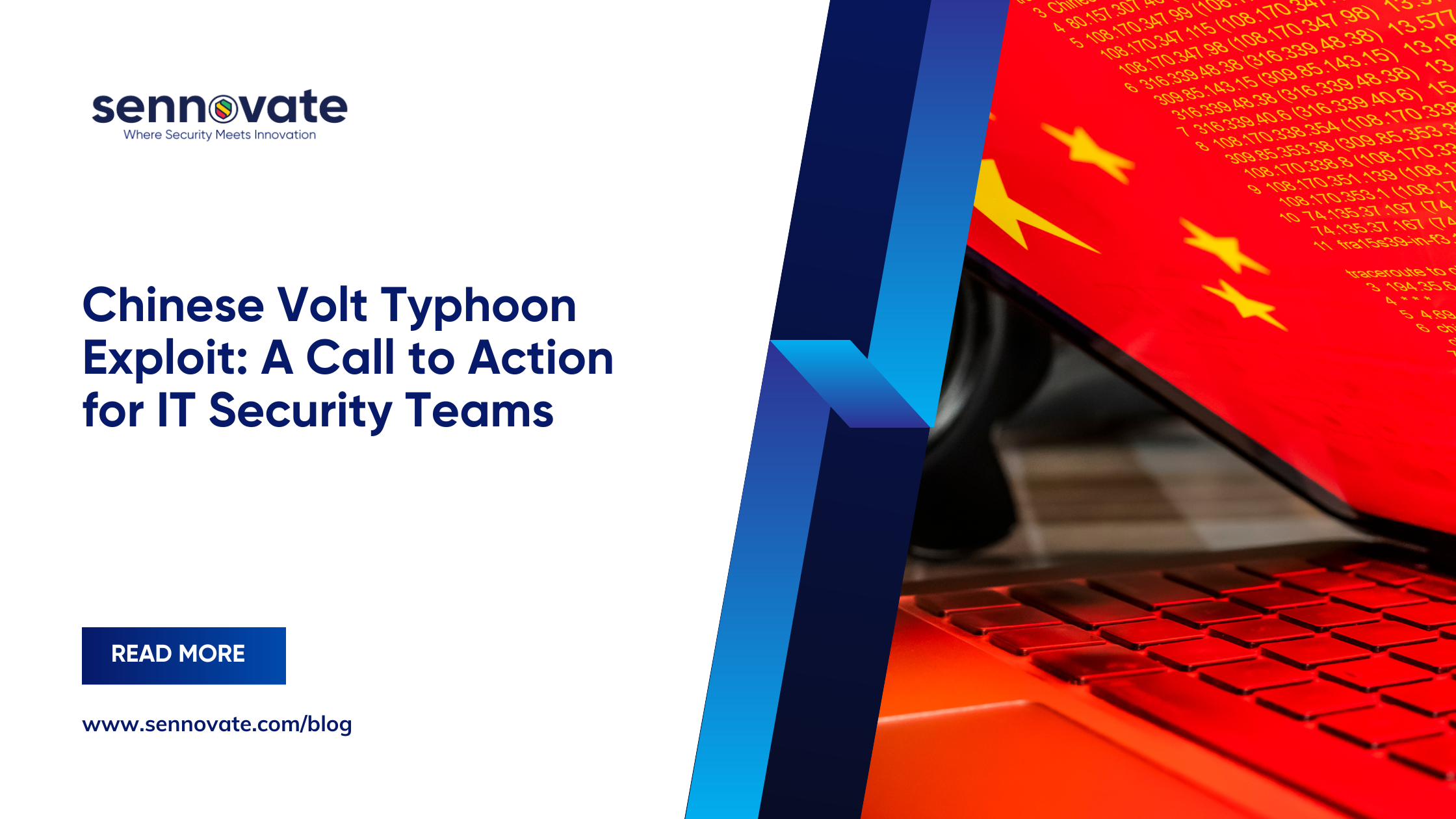
Chinese Volt Typhoon Exploit: A Call to Action for IT Security Teams
In a recent and concerning development, the Chinese cyber-espionage group Volt Typhoon exploited a vulnerability in Versa Networks’ Director product, targeting IT sectors across the U.S. and globally. This attack, threatening the integrity of critical infrastructure, underscores the urgent need for IT security teams to bolster their defenses against advanced persistent threats (APTs) like Volt Typhoon.
Breaking Down the Volt Typhoon Attack
Volt Typhoon is a well-known entity in the cybersecurity world, recognized for its advanced techniques and persistent attacks. The latest attack involves a critical zero-day vulnerability in Versa Director, a centralized management tool used for orchestrating SD-WAN and security services. Understanding the technical details of this attack provides crucial insights into how similar breaches can be prevented.
Initial Exploit: Injecting Malicious Code
The attack begins with the exploitation of a zero-day vulnerability in Versa Director’s web interface. This flaw allowed the attackers to deploy a web shell by leveraging Java instrumentation to inject malicious code directly into the Tomcat web server’s process memory space on the compromised Versa Director servers.
This injection enabled the attackers to hook into Versa’s authentication functionality. By doing so, they could intercept credentials in plaintext as they were being processed by the system. This tactic is particularly insidious because it allows the attackers to capture valid user credentials without triggering typical security alarms, effectively enabling them to move undetected within the compromised environment.
Credential Harvesting and Downstream Compromises
The primary goal of the injected web shell was to intercept and exfiltrate credentials from Versa Director in plaintext. By hooking into the authentication process, the attackers could silently gather the usernames and passwords of legitimate users, which could then be used for further attacks.
This capability potentially allows Volt Typhoon to compromise client infrastructure downstream using the legitimate credentials they intercepted. Unlike traditional attacks that rely on lateral movement within a network, this method leverages the trust associated with legitimate user credentials, making it much harder to detect and stop the intrusion.
Why Did This Breach Happen?
This breach occurred due to several factors:
- Zero-Day Vulnerability: The core reason for this breach was the exploitation of a zero-day vulnerability in Versa Director. Because this flaw was previously unknown, no patches or mitigations were available, making it a prime target for a sophisticated group like Volt Typhoon.
- Advanced Attack Techniques: The use of Java instrumentation and Javassist to inject code into the Tomcat server’s process memory space showcases the advanced technical capabilities of Volt Typhoon. This method allowed them to bypass traditional security measures and directly intercept sensitive credentials.
- Insufficient Monitoring of Authentication Processes: The attack succeeded in part because it targeted the authentication process, an area that may not always be monitored as closely as other parts of the network. The lack of detailed logging and monitoring of authentication hooks allowed the attackers to operate undetected.
How Sennovate Helps as a Managed Security Service Provider
In the face of such sophisticated cyber threats, organizations must partner with an experienced MSSP like Sennovate to protect their critical assets and ensure business continuity. Here’s how Sennovate can help:
1. Sennovate Advanced Threat Detection and Response
Sennovate’s Security Operations Center (SOC), powered by state-of-the-art tools like Stellar Cyber, provides 24/7 monitoring and advanced threat detection. Our SOC is equipped to identify and respond to the early signs of an APT like Volt Typhoon, ensuring threats are neutralized before they can cause significant damage.
2. Sennovate Vulnerability Management
Sennovate’s proactive vulnerability management services are designed to identify and remediate vulnerabilities before they can be exploited. By conducting regular scans and patch management, Sennovate ensures that systems like Versa Director are always up-to-date and secure against known vulnerabilities.
3. Sennovate Incident Response
In the event of a security breach, Sennovate’s incident response team is ready to act swiftly. We provide comprehensive forensics services to trace the origin of the attack, understand its impact, and implement measures to prevent future incidents.
4. Sennovate Security Awareness Training
Human error remains one of the weakest links in cybersecurity. Sennovate offers tailored security awareness training to help organizations educate their employees on the latest threats, including phishing and social engineering tactics often used by groups like Volt Typhoon.
5. Sennovate Governance, Risk and Compliance
Many industries are governed by strict compliance requirements. Sennovate’s governance, risk, and compliance (GRC) services help organizations stay compliant with industry regulations while also enhancing their overall security posture. This includes ensuring that security controls are in place and regularly audited to prevent any lapses.
Conclusion
The Volt Typhoon incident shows the importance of a robust cybersecurity strategy. As threats continue to grow in complexity, partnering with a trusted MSSP like Sennovate is no longer optional—it’s essential. By leveraging Sennovate’s expertise and comprehensive security services, organizations can defend against even the most persistent threats and ensure the safety of their critical infrastructure.
